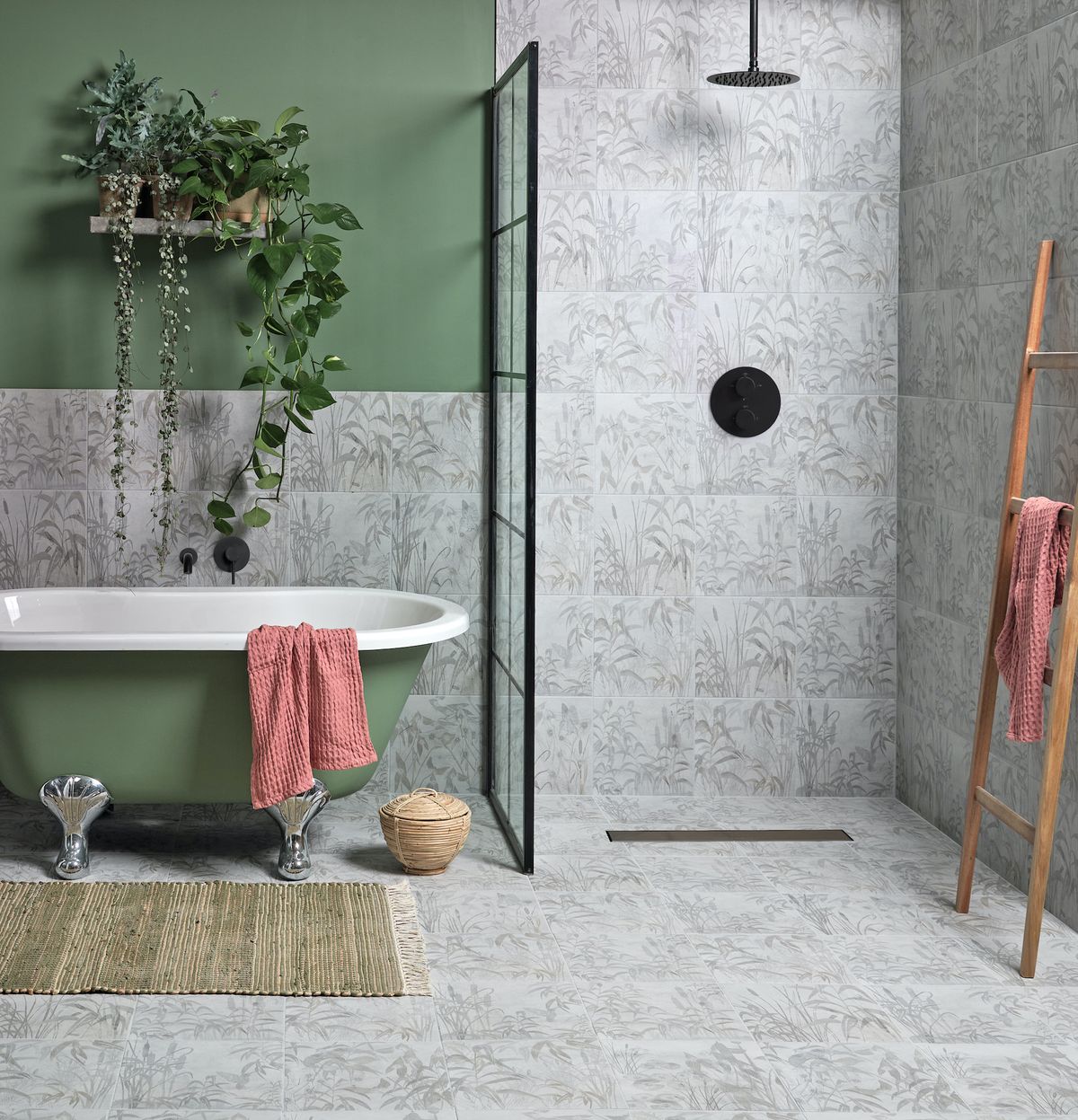How to clean bathroom floor tiles? Maintaining cleanliness and hygiene in the bathroom is crucial, and one of the essential tasks is cleaning the floor tiles. Bathroom floor tiles are prone to dirt, grime, and stains due to moisture and foot traffic. Regular and proper cleaning not only keeps the tiles looking good but also helps prevent the buildup of mold, mildew, and bacteria. In this article, we will provide you with a comprehensive guide on how to effectively clean bathroom floor tiles, discussing various cleaning methods, tools, and tips to ensure a sparkling and healthy bathroom environment.
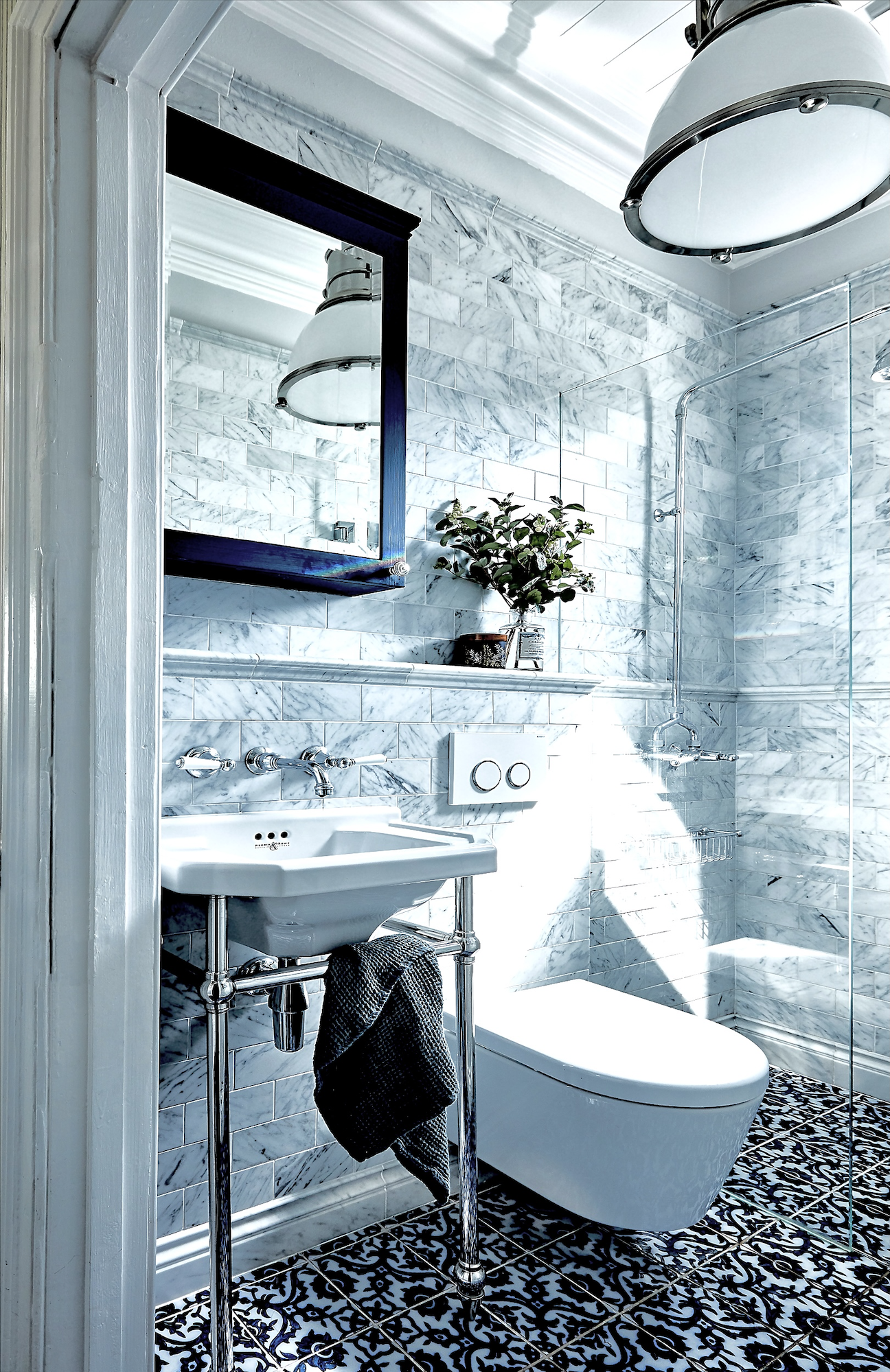
Gather the Necessary Supplies:
- Broom or vacuum cleaner: Before cleaning, remove loose debris, dust, and hair from the bathroom floor using a broom or vacuum cleaner with a brush attachment.
- Mop or cleaning tool: Select a mop or cleaning tool suitable for the type of tiles you have. Consider microfiber mops, sponge mops, or spin mops depending on your personal preference and the condition of your bathroom accent wall.
- Cleaning solutions: Choose from various cleaning solutions, such as commercial tile cleaners, mild detergents, vinegar, baking soda, hydrogen peroxide, or specialized tile and grout cleaners. Keep in mind the type of tiles you have and any manufacturer’s recommendations.
- Soft-bristle brush or sponge: Have a soft-bristle brush or a sponge handy to assist in scrubbing stubborn stains or grout lines.
General Cleaning Method:
- Sweep or vacuum: Begin by removing loose debris, dust, and hair from the bathroom floor using a broom or vacuum cleaner.
- Prepare a cleaning solution: Dilute your chosen cleaning solution according to the instructions provided. If using a homemade solution, mix water with vinegar, baking soda, or mild detergent in a bucket or spray bottle.
- Spot-test: Before applying any cleaning solution to the entire floor, it is advisable to spot-test in a small, inconspicuous area to ensure it does not damage or discolor the tiles.
- Apply the cleaning solution: Thoroughly wet the bathroom floor with the cleaning solution, focusing on areas that require more attention, such as stains or heavily soiled spots.
- Let the solution sit: Allow the cleaning solution to sit on the tiles for a few minutes, giving it time to break down and loosen dirt, grime, and stains. Avoid letting the solution dry on the tiles.
- Scrub the tiles and grout lines: Gently scrub the tiles and grout lines using a soft-bristle brush or sponge. Use small circular motions for stubborn stains or grout.
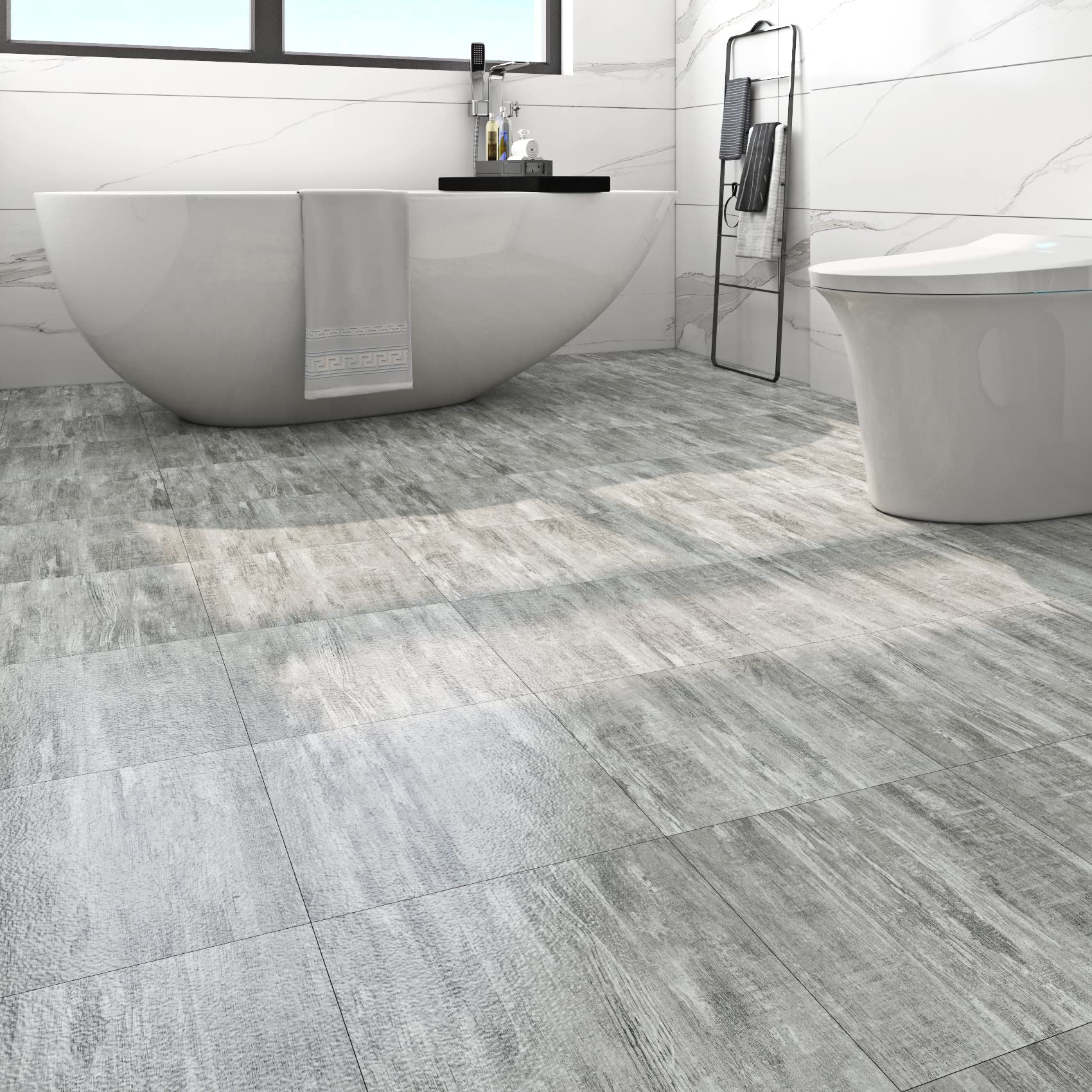
Dealing with Stubborn Stains or Grout Discoloration:
- Baking soda and vinegar paste: For stubborn stains or discoloration on tiles or grout, create a paste by combining baking soda with vinegar. Apply the paste to the affected areas and let it sit for a few minutes. Scrub gently with a soft-bristle brush or sponge and rinse thoroughly.
- Hydrogen peroxide solution: Hydrogen peroxide is effective in removing tough stains and brightening grout. Mix hydrogen peroxide with an equal amount of water and apply it to the stained areas. Let it sit for a few minutes, scrub with a soft-bristle brush, and rinse well.
- Oxygen bleach: Oxygen bleach, such as hydrogen peroxide-based cleaners, can be used to tackle deep-set stains or mold on tiles or grout. Follow the product instructions carefully and ensure adequate ventilation when using bleach-based cleaners.
Maintaining Clean Bathroom Floor Tiles:
- Regular maintenance: To keep your bathroom floor tiles looking their best, implement a regular cleaning routine. Sweep or vacuum frequently to remove loose dirt and debris, and mop with a mild detergent solution or a specialized tile cleaner at least once a week.
- Preventive measures: Promptly wipe up any spills or splashes on the bathroom floor to prevent staining or discoloration. Use bathroom floor mats or rugs near the shower or tub to reduce water exposure on the tiles.
- Grout maintenance: Periodically inspect and maintain the grout lines in your bathroom. Apply grout sealer to keep the grout lines protected and prevent mold, mildew, or discoloration. Regularly clean grout lines using a soft brush or grout cleaner to prevent buildup.
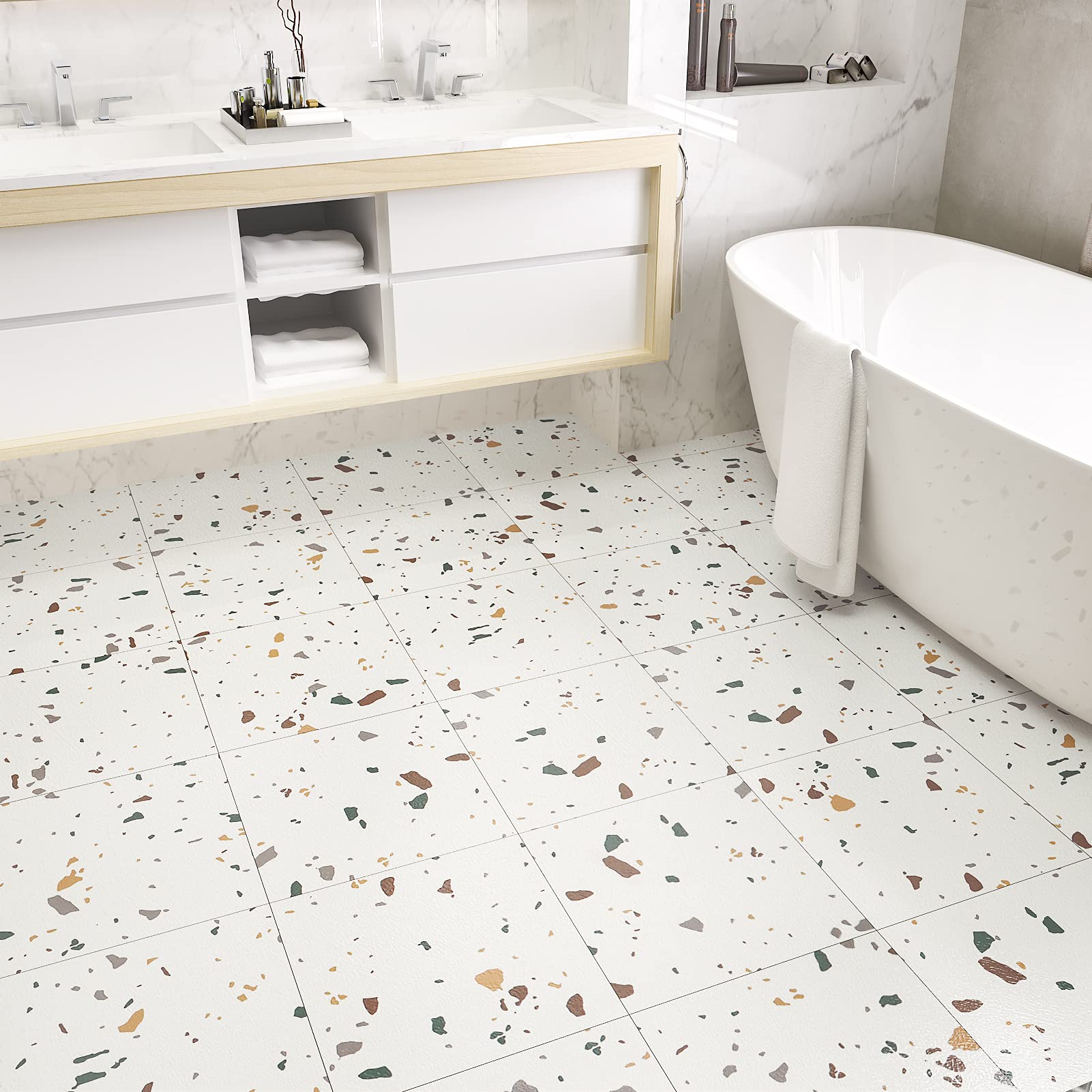
Advantages of bathroom tiles
Bathroom tiles are a popular choice for homeowners due to their unique combination of practicality and aesthetic appeal. They offer numerous advantages that make them an ideal flooring and wall covering option for bathrooms.
Durability and Longevity:
- Resistance to moisture and humidity: Bathroom tiles are designed to withstand the high moisture and humidity levels commonly found in bathrooms. Their waterproof nature prevents water damage and ensures that the tiles remain intact and visually appealing for many years.
- Stain and chemical resistance: Tiles are resistant to stains, making them an excellent choice for bathrooms prone to spills or splashes from various products. They are also resistant to the effects of cleaning chemicals, allowing for easy maintenance without compromising the appearance or integrity of the tiles.
- Longevity: With proper installation and care, bathroom tiles have a long lifespan, ensuring that your investment stands the test of time. They resist wear and tear, including scratches and fading, making them a durable and reliable flooring and wall covering option.
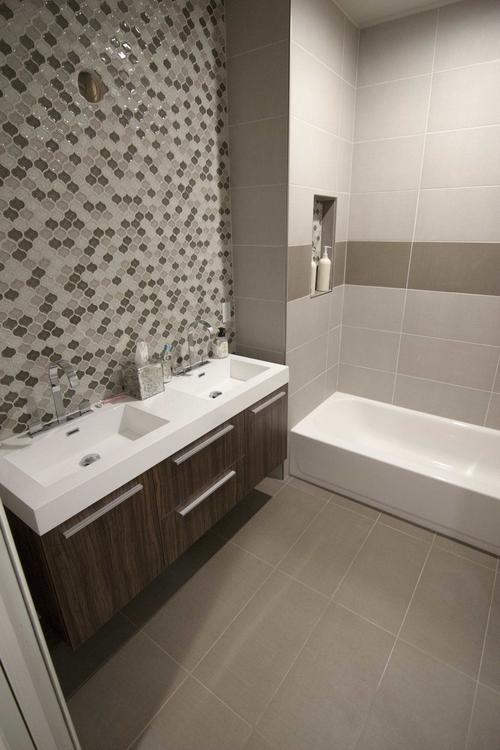
Versatility and Design Options:
- Wide range of styles and materials: Bathroom tiles come in a vast array of styles, colors, patterns, and materials, offering endless design possibilities. From classic ceramic or porcelain tiles to natural stone, glass, or mosaic tiles, there is a tile to suit every taste, style, and bathroom theme.
- Variety of shapes and sizes: Tiles come in various shapes and sizes, ranging from traditional squares and rectangles to hexagons, subway tiles, or even custom designs. This versatility allows for unique and creative tile layouts, enabling homeowners to personalize their bathrooms and create stunning visual effects.
- Customizable patterns and layouts: Tiles can be arranged in numerous patterns and layouts, offering endless opportunities for creativity and expression. Herringbone, basketweave, chevron, or staggered patterns can add depth, texture, and visual interest to bathroom floors and walls.
Conclusion:
Cleaning your bathroom floor tiles regularly not only ensures a hygienic and pleasant environment but also helps preserve the appearance and condition of the tiles. By following the steps outlined in this comprehensive guide, gathering the necessary supplies, and using appropriate cleaning methods, you can efficiently clean your bathroom wall design tiles and maintain their shine. Remember to spot-test cleaning solutions, be gentle when scrubbing, and take preventive measures for ongoing maintenance. With a clean and well-maintained bathroom floor, you can enjoy a sparkling and inviting space where cleanliness, hygiene, and style thrive.
